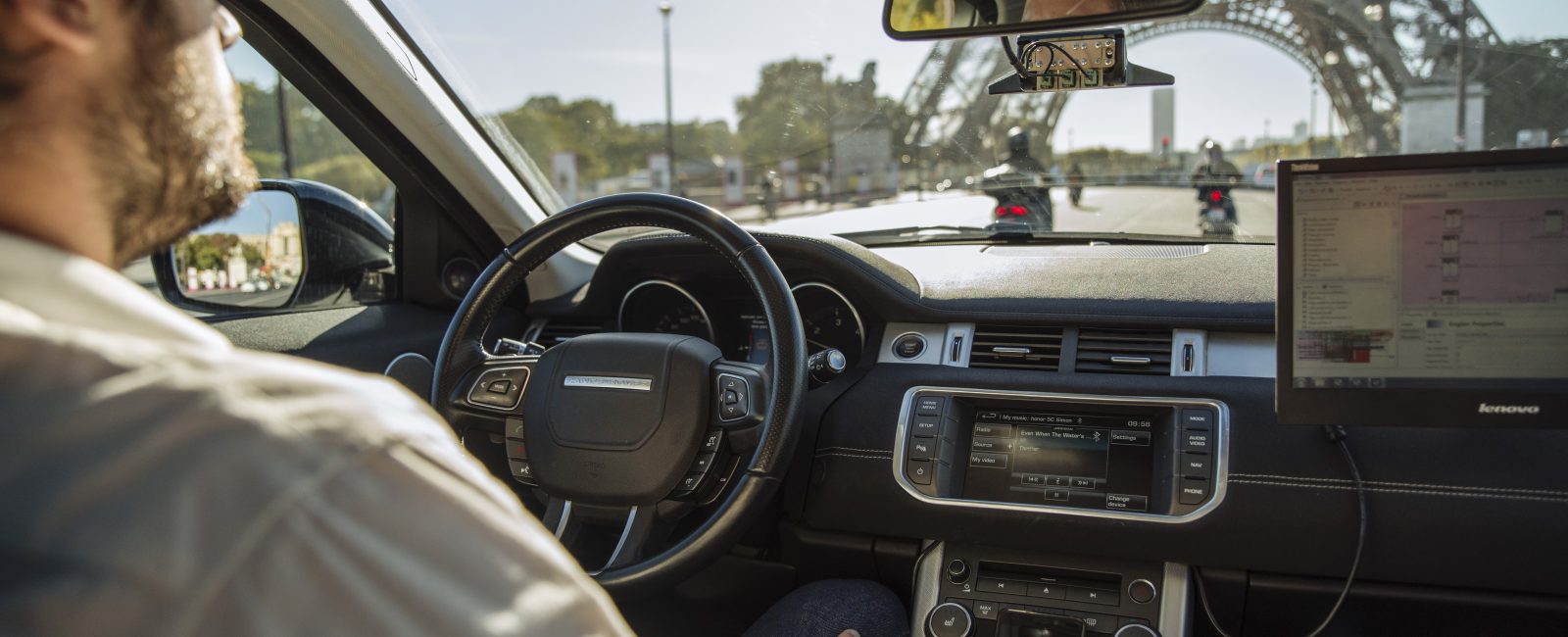
Clean and shared mobility, as well as greater road safety, concern us all: from decision makers to road users, to car manufacturers. Thankfully, there appears to be an increasingly credible future for autonomous transportation.
Not only could the technology meet society’s ecological requirements, but it has also already started to improve road safety. As industry influencer Tom Bamonte recently put it, “transition automation comes at a time when we’re starting to rethink mobility,” along with many other aspects of society. Autonomous vehicle (AV) technology has made some incredible strides and its life-saving potential is hard to overstate.
But industry observers have something else to be pleased about: the company behind some of the AV market’s earliest successes, Valeo, just announced an online event to showcase the next phase in its technology. The double-header — “See the invisible…” — will be held on November 23, at both 11 AM and 5 (PM Paris Time), as per the company’s website.
Levels of autonomy
“The continuing evolution of automotive technology aims to deliver even greater safety benefits and – one day – deliver automated driving systems (ADS) that can handle the whole task of driving when we don’t want to or can’t do it ourselves,” according to the National Highway Traffic Safety Administration.
So where are we with the readiness of autonomous vehicle technology?
If a vehicle has Level 0, Level 1, or Level 2 driver support systems, an active and engaged driver is always required. They are responsible, at all times, for the vehicle’s operation and must supervise the technology continuously.
With Level 3 (conditional), Level 4 (high), or Level 5 (full) automated driving systems, the technology takes increasing control of driving without human supervision. At Level 3, however, the driver must remain prepared to take control of the vehicle when alerted by the ADS.
2021 is an important milestone for the automotive industry with the market debut of the first two cars capable of reaching level 3 automation — the Honda Legend, and soon the Mercedes S-Class. Both cars are fitted with Valeo’s LiDAR technology, the first series-produced LiDAR on the automotive market. The feature creates a detailed three-dimensional model of the vehicle’s surroundings, allowing it to perceive objects outside of the driver’s field of vision and avoid obstacles. Valeo’s innovation in this area, notably with production capabilities at industrial scale, represents a significant technological step forward in terms of road safety, one that has sent ripples across the industry. Other players are, of course, stepping up their own efforts with the technology; indeed, as industry commentator E. W. Niedermeyer observes, “the lidar space is turning into an epic knife fight.”
With Level 3, conditional automation, the driver can delegate driving tasks to the vehicle in certain circumstances, while ensuring complete safety for everyone in and around it. Of course, future Level 4, high automation, and Level 5, full automation, driving systems are not yet available.
Valeo’s impact: innovation in driver assistance
Arguably, much of the industry progress to date owes a debt to 30-years of Valeo research in automated driving -assistance systems. The field was born in 1991 with the first ultrasonic sensors for parking maneuvers, fitted on the BMW 7 series. In this sense, Valeo laid the foundations for the modern autonomous car with world-leading driving assistance sensors.
Not only is the company an expert in designing the technologies themselves, but also in manufacturing them. Ultimately, that is what this innovation race will be about; produced in a laboratory, without overcoming the real-world challenge of large-scale deployment, AVs will never bring in an affordable industry baseline for customers.
Valeo’s portfolio of driving assistance sensors technologies covers the full range of categories currently on the market. There are three driver assistance sequences defined by SAE International: the ability to inform drivers with ultrasonic sensors about the risks of collision; the ability to assist with safer driving, by braking faster and harder, and keeping the vehicle in its lane; and the delegation of driving tasks, which is represented by ongoing innovation via systems with real-time analysis capabilities.
For its part, Valeo has ultrasonic sensors, cameras, scanners and LiDAR, which correspond to the feedback of signals, in turn, interpreted by software associated with Valeo’s own artificial intelligence.
What makes Valeo stand out is that it is the only player to possess all the driving assistance sensors, with the additional ability to produce them at the scale required by the car industry.
High stakes
The stakes could not be greater, with transport innovation likely even an essential part of any effective climate strategy. For that reason, governments themselves are engaged, while companies battle it out to be the one ground-shattering AV innovator. The prize: a market estimated to hit almost $65 billion by 2026.
There are many challenges ahead, of course; one being the regulatory wrangling needed to bring safe autonomous driving to the masses. The topic is an emotive one too. This was demonstrated recently by the backlash from Tesla’s customer base over the appointment of Duke University professor Missy Cummings, reported by technology commentator David Zipper. Cummings is perceived by Tesla die-hards to be a critical voice.
Controversies aside, the next steps wait to be discovered on November 23. Reportedly, Valeo will present an innovation that will contribute to the improvement of safety and autonomous mobility. We will soon see what the industry’s commentators have to say about the claim.












